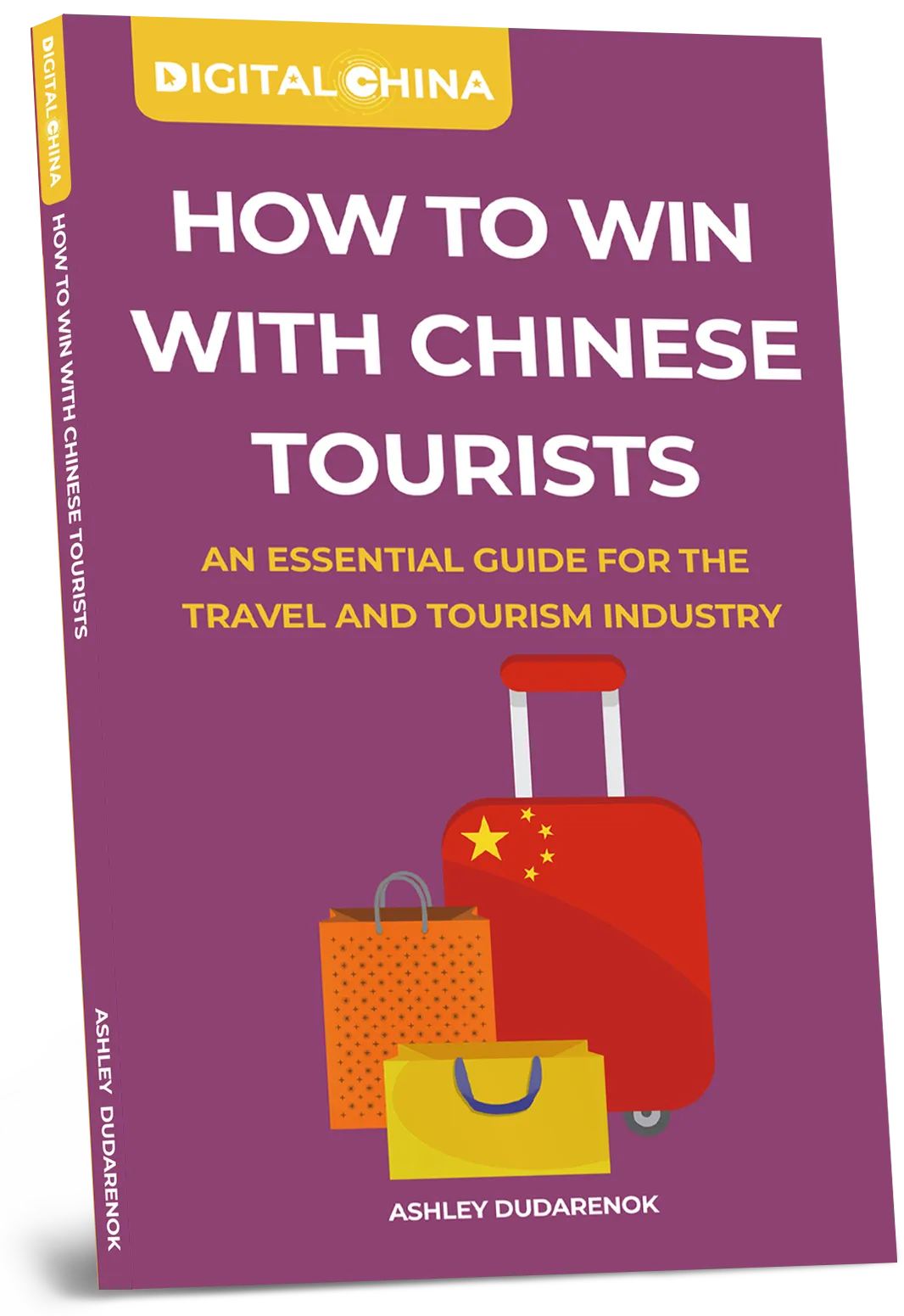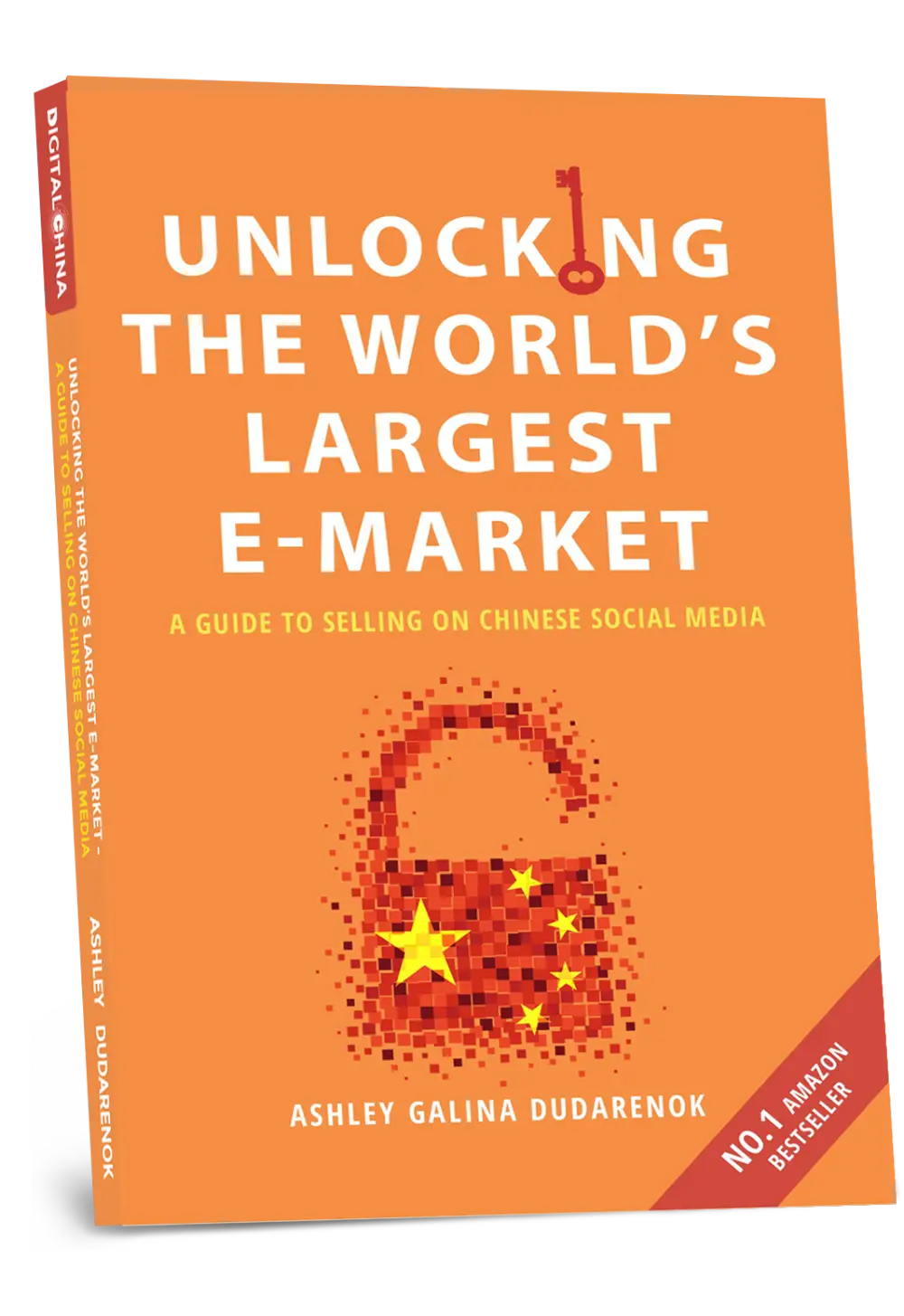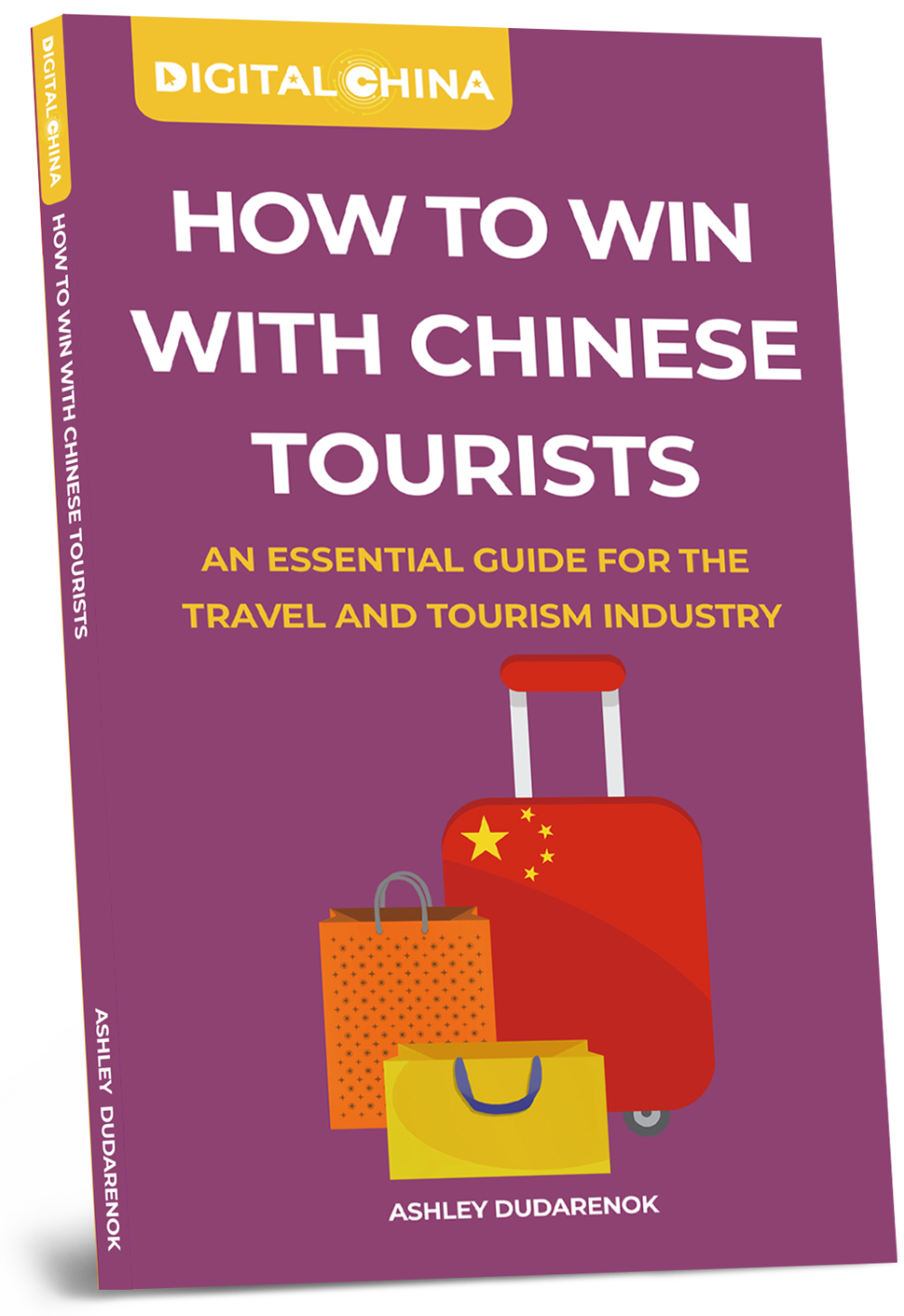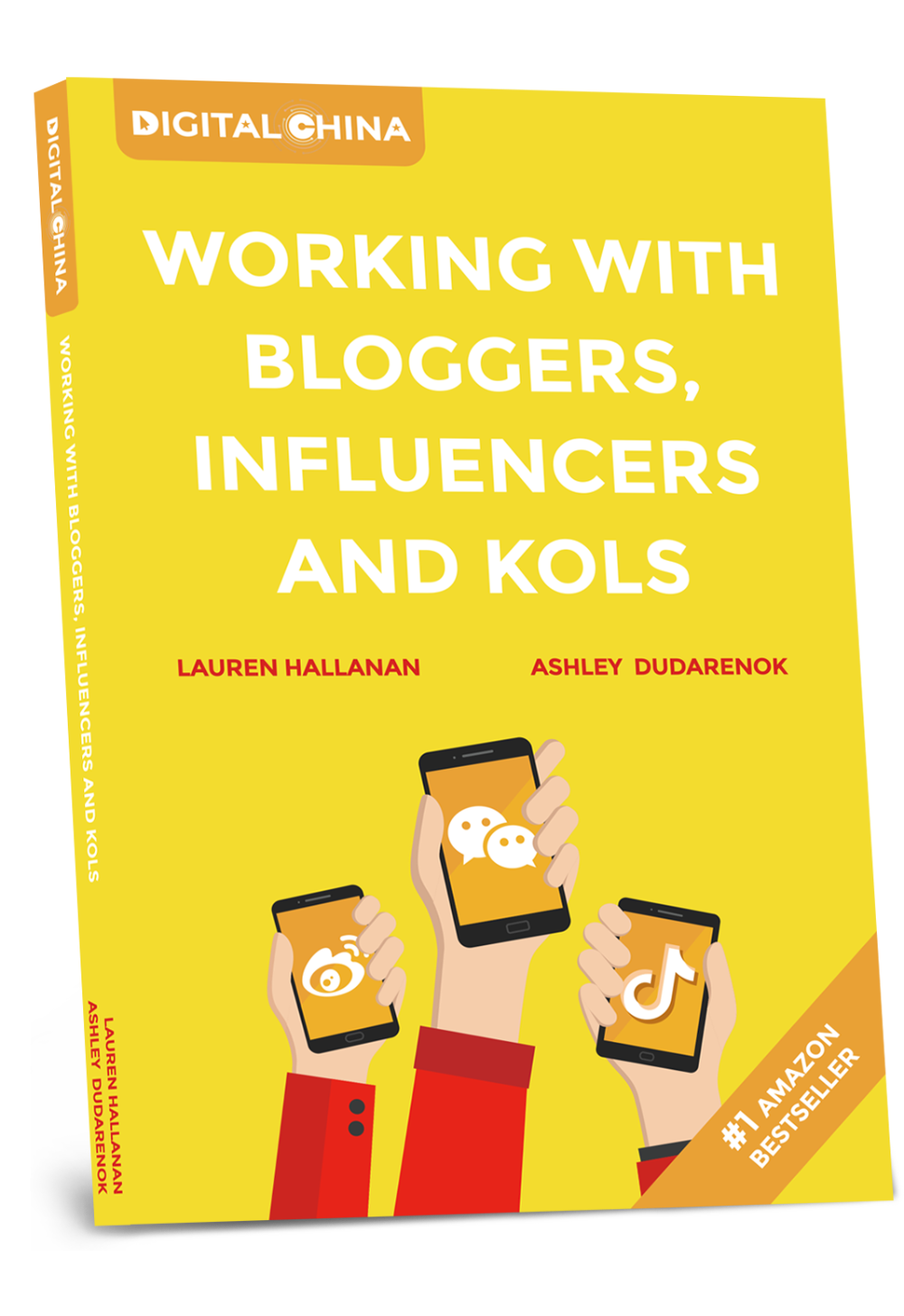HOW TO WIN WITH CHINESE TOURISTS: AN ESSENTIAL GUIDE FOR THE TRAVEL AND TOURISM INDUSTRY

The first edition of How to Win with Chinese Tourists was published in 2019 during a period of rapid growth in both domestic and international Chinese tourism. Since 2014, Chinese travelers have become a key pillar of the global tourism market, driven by a growing middle class and adventurous young solo travelers. The rise of online travel platforms, increased affluence, and a strong desire for cultural exploration made international travel a top priority for millions of Chinese citizens.
By 2019, over 150 million Chinese travelers were spending more than USD 250 billion globally, cementing China’s position as the world’s largest outbound tourism market. As international travel rebounds in 2025, Chinese tourists are once again leading the charge, but their travel preferences have shifted dramatically. To succeed in this rapidly evolving market, it is crucial for businesses to understand and cater to the unique needs of Chinese tourists.
Written by renowned China marketing expert Ashley Dudarenok, this guide provides actionable insights and practical strategies to attract, engage, and retain Chinese tourists. It covers the evolving preferences of Chinese travelers, explores social media and influencer marketing techniques, and equips travel and tourism businesses with the tools to adapt to the post-pandemic landscape. With outbound tourism spending projected to exceed USD 300 billion by 2025, businesses must adapt their offerings to meet the rising demand for personalized, authentic, and digitally integrated experiences.

What’s Inside The Book
This book offers a comprehensive understanding of the Chinese tourist market and provides the strategies you need to successfully engage Chinese travelers. Here’s what you’ll learn:
Understanding Modern Chinese Tourists: Learn about the different types of Chinese tourists, including high-net-worth individuals, younger independent travelers, and those looking for cultural immersion.
Tourism Platforms in China: Discover the most important platforms Chinese tourists use for planning and booking trips, including WeChat, Weibo, RedNote, Mafengwo, and Fliggy.
Travel Trends for 2024: Understand the latest trends in Chinese outbound tourism, including shifts toward more experiential, wellness-focused, and family-oriented travel.
Best Practices and Recommendations: Learn from successful case studies and expert recommendations on how to attract Chinese tourists to your destination.
Step-by-Step Checklist for Success: Follow a practical checklist to build your digital presence, work with influencers, and optimize your destination’s offerings to appeal to Chinese tourists.

WHY IT MATTERS: UNDERSTANDING THE CHINESE TOURISM MARKET IN 2025
China has long been the world’s largest outbound tourism market, and the dynamics of Chinese tourism have changed significantly in the aftermath of the COVID-19 pandemic. As we step into 2025, the travel landscape is continuing to evolve, and Chinese tourists—across various age groups—are redefining what they want from their travel experiences.
Here’s why understanding the modern Chinese tourist is crucial:
DIGITAL AND SOCIAL COMMERCE: THE NEW TRAVEL PLANNING CHANNELS
Social media and digital platforms are pivotal in shaping Chinese travelers' decisions. Platforms like WeChat, Douyin (TikTok), and RedNote have become integral to the travel booking process, with about 70% of Chinese tourists using KOLs (Key Opinion Leaders) and KOCs (Key Opinion Consumers) for recommendations. To succeed, businesses need to create engaging, shareable content and collaborate with influencers who resonate with their target audience. Social commerce dominates in China, making digital engagement a critical component of any tourism marketing strategy
PERSONALIZED, WELLNESS-CENTERED, AND FAMILY-ORIENTED TRAVEL
As the tourism market evolves, Chinese tourists are placing greater importance on wellness, personal experiences, and family travel. Wellness tourism is growing, with nearly 40% of Chinese travelers seeking health-centered trips in 2025. Family-oriented and multi-generational vacations are also on the rise, and businesses must cater to these preferences by offering family packages, kid-friendly services, and wellness-focused options. Whether it's health retreats, family-friendly activities, or tailored experiences, providing personalization will drive loyalty and brand differentiation.
THE INFLUENCE OF MICRO-KOLS, KOCS, AND PRIVATE POOLS
Micro-KOLs and KOCs have gained significant influence in China’s travel industry. These smaller, more relatable influencers foster higher engagement rates than larger KOLs, making them ideal for targeted campaigns. KOCs, often regular consumers or brand employees, have more trust within their communities, making their recommendations more valuable. Leveraging these influencers and building private traffic pools via platforms like WeChat will allow brands to engage Chinese tourists authentically, driving conversions and increasing brand loyalty
UNDERSTANDING THE SENIOR MARKET: THE GROWING ELDERLY TOURIST DEMOGRAPHIC
China’s aging population presents a unique opportunity for the travel industry. By 2025, seniors over the age of 60 will represent 15% of outbound travelers. These tourists often seek comfortable, safe, and family-oriented services, with a preference for organized group tours. To attract elderly travelers, businesses should offer accessible accommodations, medical assistance, and Chinese-speaking staff. Catering to this demographic requires understanding their specific needs and offering a seamless, worry-free travel experience.
REPUTATION MANAGEMENT AND ONLINE REVIEWS: TRUST AND SOCIAL PROOF
In China, online reviews and reputation management play a crucial role in influencing tourists' decisions. Platforms like Mafengwo, Ctrip, and Fliggy are key for Chinese travelers when choosing destinations. Building a strong online reputation and encouraging positive reviews will help attract Chinese tourists. Businesses should also engage with online feedback promptly, ensuring that concerns are addressed and trust is built. A positive digital reputation can significantly boost brand awareness and drive sales.
SUSTAINABLE TRAVEL: THE GROWING DEMAND FOR ECO-CONSCIOUS TOURISM
Sustainability is becoming increasingly important for Chinese consumers, particularly among younger generations. As the demand for eco-friendly travel experiences grows, businesses should prioritize sustainable practices, such as offering green hotels, promoting low-carbon travel, and incorporating local culture into their services. Chinese travelers are becoming more discerning about the environmental impact of their vacations, and businesses that align with these values will gain favor with this socially conscious demographic.
KEY HIGHLIGHTS: WHAT YOU NEED TO KNOW ABOUT CHINESE TOURISTS IN 2025
THE RISE OF THE INDEPENDENT CHINESE TOURIST: WHY GROUP TOURS ARE A THING OF THE PAST
More young Chinese travelers are choosing the path of independent travel over traditional group tours, opting for more immersive, customizable experiences. This shift is fueled by the desire for personalized adventures and the ease of self-booking through digital platforms. Understanding the evolving trend towards freedom of travel is essential for businesses to cater to this growing market segment.
THE CRUCIAL ROLE OF SOCIAL MEDIA IN CHINESE TOURISM DECISION-MAKING
Social media plays a pivotal role in the Chinese tourism industry. Platforms like WeChat, Weibo, Douyin, and RedNote are integral to how Chinese tourists research destinations, plan trips, and make bookings. It’s not just about presence—it’s about understanding the nuances of each platform and utilizing them to reach the right audience with engaging, relevant content.
SOCIAL COMMERCE IN CHINA: WHEN E-COMMERCE AND SOCIAL MEDIA COLLIDE
In China, the boundaries between e-commerce and social media are increasingly blurred. Platforms such as WeChat and Douyin not only serve as channels for social interaction but are now integrated with shopping functions, allowing users to make purchases directly. Brands must leverage this fusion of social and commerce to create seamless, engaging customer journeys that drive conversion.
CULTURAL SENSITIVITY IS KEY: HOW TO WIN OVER CHINESE TOURISTS WITH THE RIGHT TOUCH
Chinese tourists seek destinations and brands that respect and understand their culture. From signage in Chinese to food preferences and local customs, businesses must prioritize cultural sensitivity to ensure a warm welcome. Simple gestures like providing Chinese-speaking staff or offering local cuisine options can enhance the customer experience
KEY TAKEAWAYS: HOW TO ENGAGE AND CONVERT CHINESE TOURISTS

LEVERAGE CHINESE DIGITAL PLATFORMS: BE WHERE YOUR AUDIENCE IS
To succeed in attracting Chinese tourists, establishing a presence on the right digital platforms is a must. WeChat, Douyin, and RedNote are not just platforms—they are ecosystems. Brands must adapt their marketing strategies to each platform’s unique features and audience behaviors to stay competitive in China’s dynamic tourism market.

USE KOLS AND INFLUENCERS TO AMPLIFY YOUR BRAND IN CHINA
Key Opinion Leaders (KOLs) and Key Opinion Consumers (KOCs) are powerful tools in China’s digital marketing landscape. Collaborating with these influencers can give brands access to highly engaged audiences and build trust quickly. Their authenticity and relatability make them indispensable when it comes to driving engagement and conversion in the competitive Chinese market.

FOCUS ON PERSONALIZATION AND AUTHENTIC EXPERIENCES: CHINESE TOURISTS WANT MORE THAN SIGHTSEEING
Chinese tourists no longer just want to visit landmarks—they crave authentic, memorable experiences that align with their personal interests. From cultural immersion to wellness and adventure travel, businesses need to focus on personalization to meet the growing demand for experiential travel. Tailor your offerings to create unique, culturally rich experiences that will leave a lasting impression.

EMBRACE MOBILE PAYMENTS: MAKE IT EASY FOR CHINESE TOURISTS TO SPEND
Mobile payments like Alipay and WeChat Pay are integral to the Chinese consumer experience, and they are just as crucial for tourism. Ensuring your destination supports these mobile payment systems can streamline the transaction process and make Chinese tourists feel more comfortable. In fact, offering mobile payment options is not just a convenience—it’s an expectation.

BUILD STRONG PRE-TRIP ENGAGEMENT: CONNECT WITH CHINESE TOURISTS BEFORE THEY ARRIVE
Engagement should start well before Chinese tourists step foot in your destination. Begin connecting with them through the digital platforms they trust to plan their trips. Offering content, promotions, and experiences on these platforms will ensure you stay top of mind and encourage tourists to choose your destination. Don’t wait for them to arrive—start the conversation early and build anticipation for their visit.
CASE STUDY: HONG KONG AND REDNOTE STRATEGIC PARTNERSHIP TO DRIVE TOURISM IN 2024
In April 2024, the Hong Kong Tourism Board (HKTB) announced its collaboration with RedNote, focusing on deepening their relationship and co-creating content that promotes Hong Kong as a must-visit international destination. The partnership is designed to leverage RedNote’s massive and highly engaged audience to reach millions of potential Chinese tourists in a more targeted and personal way.

Exclusive Content Creation: Hong Kong and RedNote plan to co-create content that highlights the city’s unique offerings, such as its international city charm, rich cultural diversity, and year-round events. This content will be shared on RedNote’s platform to inspire Chinese tourists to explore new experiences in Hong Kong.
Boosting Exposure with KOLs and User-Generated Content: RedNote’s community of influencers, including Key Opinion Leaders (KOLs) and Key Opinion Consumers (KOCs), will be invited to experience Hong Kong’s cultural tourism offerings firsthand. Their travel content, featuring personal experiences and insights, will reach millions of users and encourage peer-driven recommendations.
Creating Personalized Travel Experiences: Both parties are focused on presenting Hong Kong as a destination that caters to the evolving needs of Chinese tourists. With growing demand for personalized, immersive experiences, Hong Kong’s tourism board aims to offer tailored recommendations to RedNote users based on their interests, whether they are looking for luxury shopping, food experiences, cultural heritage tours, or family-friendly activities.
Celebrating Hong Kong’s Popularity: Hong Kong was awarded the “User’s Favorite Destination of the Year” by RedNote in 2023, recognized as one of the top trending destinations for outbound Chinese travelers. This accolade was celebrated at the RedNote Community Cultural Tourism Conference held in Quanzhou, Fujian, where the HKTB received a warm welcome for its continued collaboration with the platform.
Leveraging RedNote’s User-Generated Content: In 2023 alone, the HKTB’s campaigns on RedNote generated over 10,000 travel-related posts and 300 million impressions. These campaigns helped build greater awareness of Hong Kong’s tourism appeal while benefiting from organic, community-driven content that speaks directly to Chinese tourists. With RedNote’s platform offering a mix of social media and e-commerce, the platform allows users to book trips, buy souvenirs, and discover new travel options, all in one place
Targeting Both Individual and Group Travelers: Hong Kong’s tourism board recognizes the need to appeal to both independent travelers, especially younger solo adventurers, and traditional group travelers. By leveraging RedNote’s versatile platform, the HKTB can create tailored campaigns for different traveler personas, ensuring a more diverse and impactful reach.
Expanding Reach Beyond Mainland China: This partnership doesn’t just stop at Mainland Chinese tourists; the content is also tailored to reach Chinese-speaking tourists in markets such as Hong Kong, Taiwan, and Southeast Asia. This expanded reach amplifies Hong Kong’s exposure in regions where many Chinese tourists have historically been inclined to travel.
FUTURE INITIATIVES AND EXPANSION
With travel demand steadily rebounding post-pandemic, the HKTB and RedNote are planning several initiatives to further boost Hong Kong’s tourism industry in 2025:
Themed Travel Campaigns: A series of thematic campaigns will focus on specific travel segments such as shopping, family vacations, food tours, and culture and heritage.
Influencer-Led Interactive Experiences: Collaborating with top influencers to offer interactive and immersive experiences for their followers, including live-streaming of events like the Hong Kong Chinese New Year celebrations and Hong Kong Arts Festival.
Localized Offers and Deals: The tourism board plans to introduce exclusive travel offers and promotions that are accessible only through RedNote’s platform, tapping into the power of social commerce to drive bookings and conversions
Ready to Attract Chinese Tourists?
Unlock the potential of the Chinese tourism market with actionable insights and strategies from our guide!
Download “How to Win with Chinese Tourists” now to equip your travel and tourism business with the tools needed to engage and retain this lucrative market.

Who Are These Books For?
“How to Win with Chinese Tourists: An Essential Guide for the Travel and Tourism Industry” is a must-read for:
TRAVEL INDUSTRY PROFESSIONALS
Whether you’re managing a luxury resort, overseeing a destination, or working as a tour operator, this book will provide you with the tools to attract, engage, and retain Chinese tourists. You’ll gain valuable insights into Chinese travelers’ behaviors, preferences, and expectations to tailor your offerings and increase bookings.
DIGITAL MARKETING EXPERTS
For marketers who specialize in tourism or are looking to break into the travel industry, this book is a goldmine. With detailed advice on leveraging Chinese social media platforms like WeChat, Douyin, and RedNote, you’ll learn how to build targeted marketing campaigns and utilize KOLs and KOCs to maximize your reach in this competitive sector.
TOURISM BUSINESS OWNERS & ENTREPRENEURS
If you’re building a travel brand or expanding an existing one to appeal to Chinese tourists, this guide will help you understand the specifics of what Chinese tourists want and need. Whether you’re a hotel owner, destination manager, or travel service provider, this book will help you navigate the nuances of the Chinese market
CULTURAL CONSULTANTS & INTERNATIONAL TOURISM AGENCIES
Understanding cultural nuances is key to connecting with Chinese tourists, and this book provides in-depth guidance on how to adapt your services to suit their preferences. From providing Chinese-speaking staff to offering familiar payment methods, it helps you enhance the overall guest experience.
E-COMMERCE & DIGITAL PLATFORM MANAGERS
With China’s rise in digital commerce, this guide will equip you with the knowledge to integrate your offerings into Chinese platforms seamlessly. Whether you’re working with major platforms like Tmall or small, niche influencers, this book teaches you how to convert digital engagement into real-world bookings and sales.
GOVERNMENT AND TOURISM BOARDS
If you’re working with a tourism board or government agency focused on attracting international tourists, this book offers valuable insights into the specific trends driving Chinese outbound travel. The book will help you understand Chinese tourists’ evolving behavior, needs, and travel motivations to enhance destination marketing strategies and attract more visitors.
About The Author
ASHLEY DUDARENOK
Ashley Dudarenok is a globally recognized expert on China’s digital transformation and a pioneer in navigating the rapidly evolving landscape of Chinese outbound tourism. With over 15 years of experience, Ashley has become one of the foremost authorities on how international brands can successfully engage Chinese consumers, particularly in the tourism and travel sectors.
As the founder of ChoZan and Alarice, Ashley has worked with dozens of brands, providing them with tailored strategies for reaching Chinese consumers. She is a sought-after China keynote speaker, a three-time Amazon bestselling author, and has been featured in SCMP, BBC, and CNBC. Through her expertise, Ashley empowers brands to effectively connect with Chinese tourists, ensuring their success in one of the world’s most lucrative markets.
WHAT ARE PEOPLE SAYING?
Faq About How To Win With Chinese Tourists
How can I attract Chinese tourists?
To attract Chinese tourists, you need to use both online and offline strategies. Leverage Chinese social media platforms like WeChat and Douyin, collaborate with KOLs and influencers, and offer personalized experiences that cater to Chinese tourists’ interests and cultural preferences.
What are the top platforms for Chinese tourists?
Chinese tourists rely heavily on WeChat, Weibo, RedNote, Mafengwo, and Douyin for travel research and bookings. These platforms are essential for engaging with Chinese tourists before and during their travels.
How do I cater to different types of Chinese tourists?
Different groups, such as high-net-worth individuals and young independent travelers, have unique needs. Tailor your offerings by providing luxury experiences for affluent tourists and more budget-friendly, experiential options for younger, independent travelers.
How do I use KOLs in my marketing strategy?
KOLs (Key Opinion Leaders) can help boost brand visibility and drive traffic to your destination. Partner with KOLs who align with your brand’s values and target audience. Use platforms like Weibo and Douyin to maximize reach.
What is social commerce in China?
Social commerce in China refers to the integration of e-commerce and social media. Chinese tourists use social media platforms not only for inspiration but also to make purchases. Brands need to use these platforms to engage tourists and drive sales.
When will Chinese tourists return to full travel?
While international tourism has recovered somewhat in 2023, it is still below pre-pandemic levels. China’s domestic travel has bounced back strongly, and it’s expected that international travel will continue to rise as restrictions ease.
What are the key travel trends for 2024?
Chinese tourists are increasingly seeking personalized, authentic experiences. They prefer destinations that offer cultural immersion, local cuisine, and unique attractions. Digital tools and mobile payments are also essential for enhancing their travel experience.
How do I work with Chinese travel influencers?
To work with Chinese travel influencers, identify those whose audience aligns with your target demographic. Use data-driven tools to assess their engagement rates and choose influencers who can authentically promote your destination.
What types of experiences do Chinese tourists value most?
Chinese tourists value experiences that offer cultural immersion, local food, and unique sightseeing opportunities. They are increasingly interested in niche travel experiences that can be shared on social media.
How can I enhance the customer experience for Chinese tourists?
To enhance the customer experience for Chinese tourists, offer mobile payment options like WeChat Pay, provide Chinese-language signage and staff, and ensure that your website and services are tailored to meet Chinese cultural expectations.

GET YOUR FREE CHINA REPORT

READY TO UNLOCK THE POTENTIAL OF CHINESE TOURISM?
Download “How to Win with Chinese Tourists” today and start building stronger, more authentic relationships with Chinese tourists. Whether you’re a destination marketer or a travel business owner, this book provides the insights and strategies you need to succeed in one of the world’s largest and most dynamic travel markets.
Explore More Books From Chozan

INNOVATION FACTORY:
CHINA’S DIGITAL PLAYBOOK FOR GLOBAL BRANDS

UNLOCKING THE WORLD’S LARGEST E-MARKET:
A GUIDE TO SELLING ON CHINESE SOCIAL MEDIA

HOW TO WIN WITH CHINESE TOURISTS:
AN ESSENTIAL GUIDE FOR THE TRAVEL AND TOURISM INDUSTRY

DIGITAL CHINA:
WORKING WITH BLOGGERS, INFLUENCERS AND KOLS

NEW RETAIL BORN IN CHINA GOING GLOBAL:
HOW CHINESE TECH GIANTS ARE CHANGING GLOBAL COMMERCE

SELLING TO CHINA THROUGH CROSS-BORDER E-COMMERCE:
A HANDY GUIDE FOR BUSINESSES




